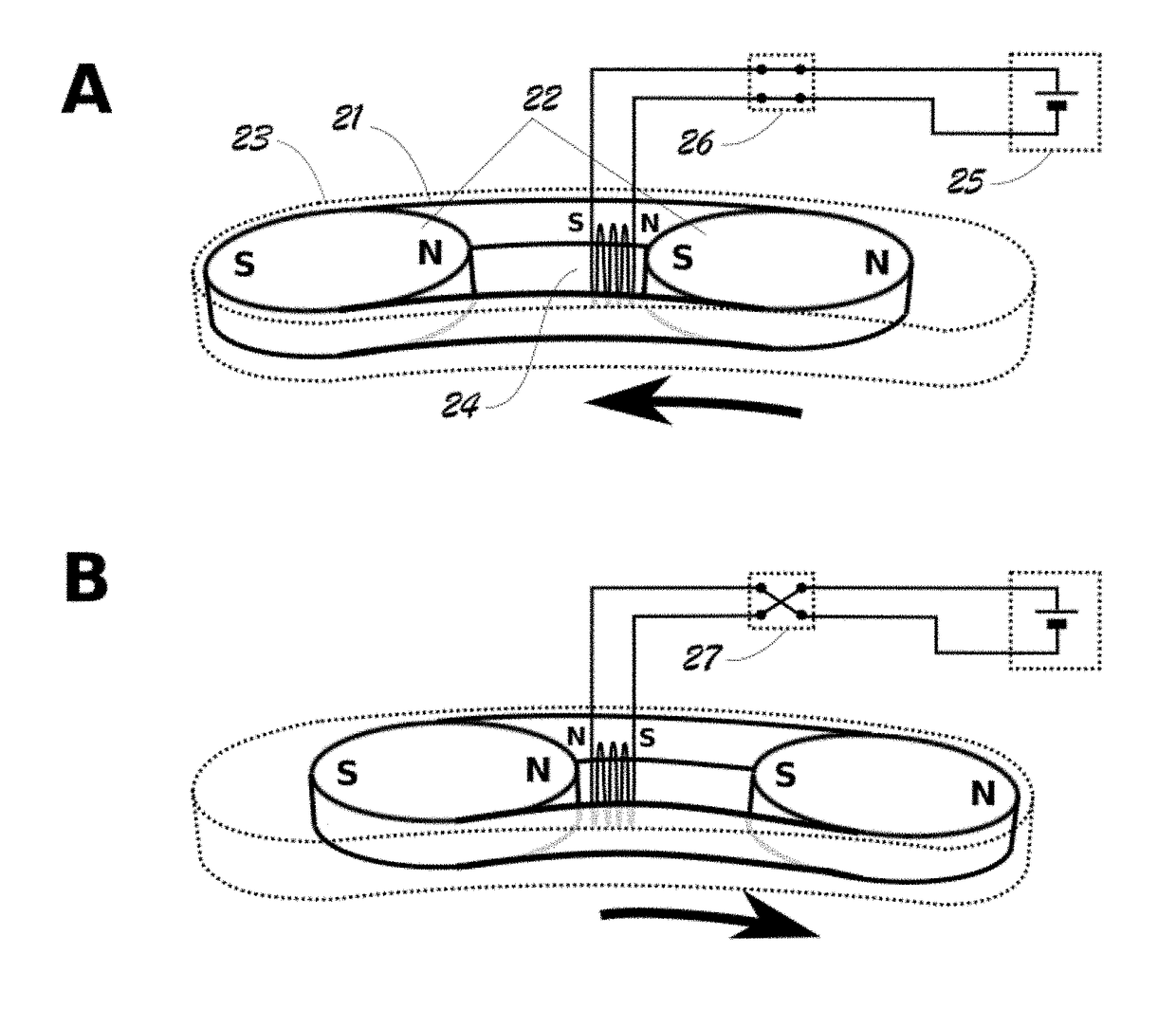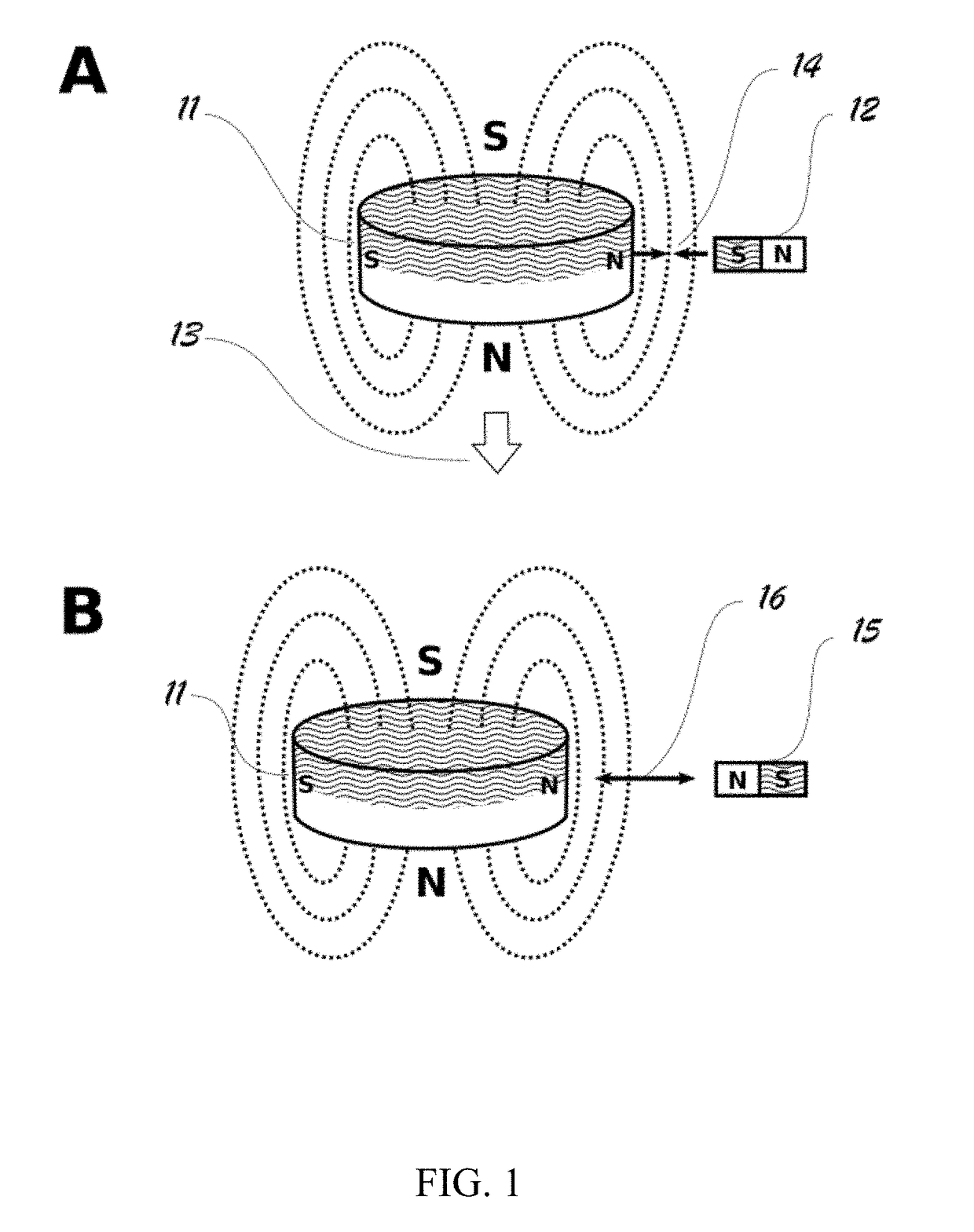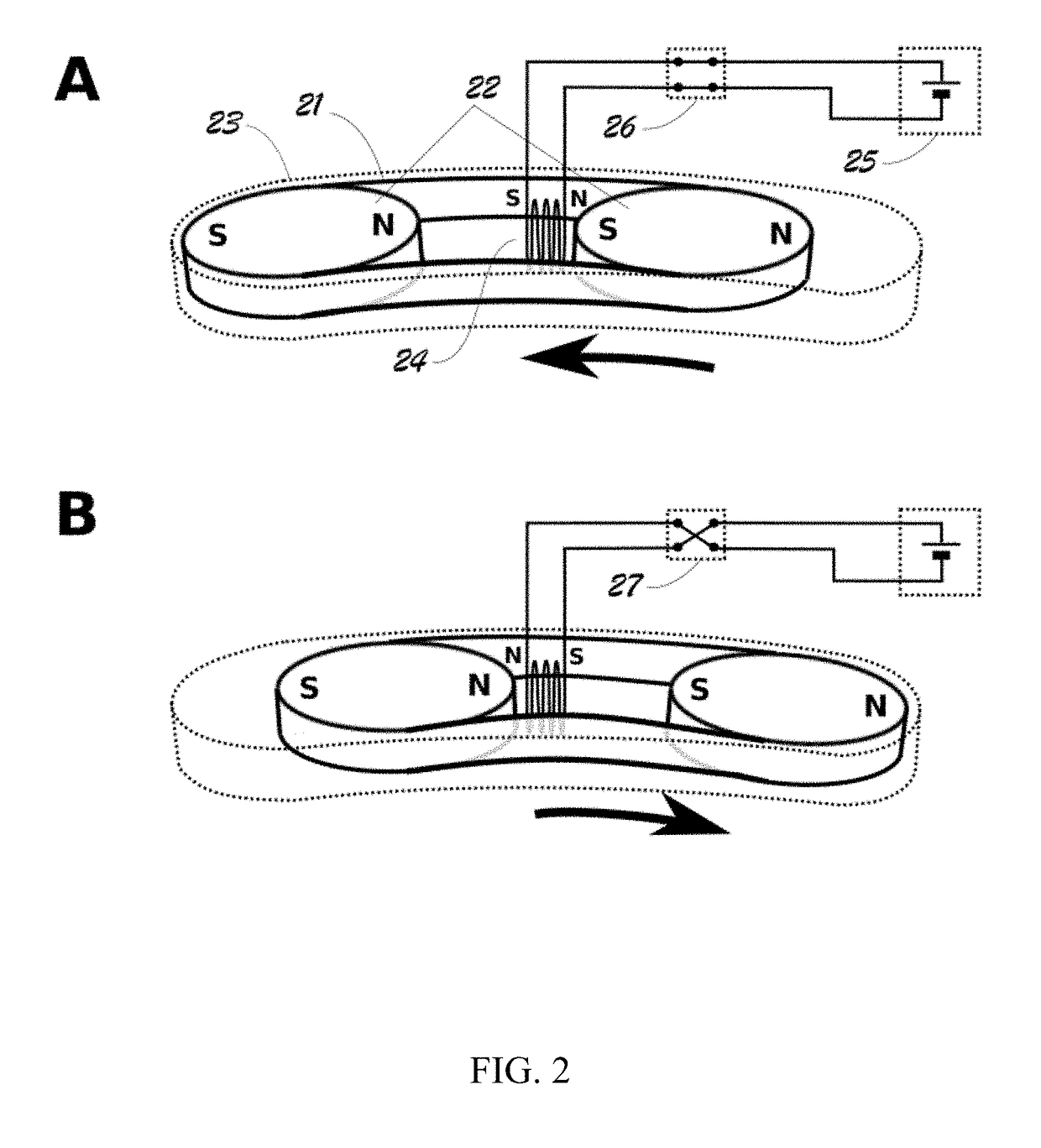Time-Varying Magnetic Field Therapy Using Multistable Latching Mechanisms
a magnetic field and latching mechanism technology, applied in the field of brain injury rehabilitation and treatment of patients, can solve the problems of limiting availability, affecting memory and motor control in specific areas, and expensive procedures, and achieve the effect of reducing energy required for moving permanent magnets and low power consumption
- Summary
- Abstract
- Description
- Claims
- Application Information
AI Technical Summary
Benefits of technology
Problems solved by technology
Method used
Image
Examples
Embodiment Construction
[0025]The present invention is concerned with methods and apparatuses using juxtapositioned permanent magnets for rehabilitation treatments of acquired brain injuries such as stroke. The apparatuses, called MagnetPeutics in some embodiments, are battery-powered headwear without being tethered to an electric outlet or a control unit such that it can be worn comfortably for hours. The invention has been made possible by the recent advancement in neodymium permanent magnets, which can produce magnetic field strengths on the order of 1 Tesla. Lithium-ion batteries have also been significantly advanced recently. However, an electromagnet driven by a battery and of a wearable weight is on the order of 1 m Tesla, which is far too weak for purpose of rehabilitation of brain injuries.
[0026]In addition to the magnetic field strength, another factor needed for effective stimulation of neurons in the brain is the speed at changing the magnetic field. The transcranial magnetic stimulation (TMS) ...
PUM
| Property | Measurement | Unit |
|---|---|---|
| diameter | aaaaa | aaaaa |
| magnetic flux density | aaaaa | aaaaa |
| magnetic flux density | aaaaa | aaaaa |
Abstract
Description
Claims
Application Information
 Login to View More
Login to View More - R&D
- Intellectual Property
- Life Sciences
- Materials
- Tech Scout
- Unparalleled Data Quality
- Higher Quality Content
- 60% Fewer Hallucinations
Browse by: Latest US Patents, China's latest patents, Technical Efficacy Thesaurus, Application Domain, Technology Topic, Popular Technical Reports.
© 2025 PatSnap. All rights reserved.Legal|Privacy policy|Modern Slavery Act Transparency Statement|Sitemap|About US| Contact US: help@patsnap.com



